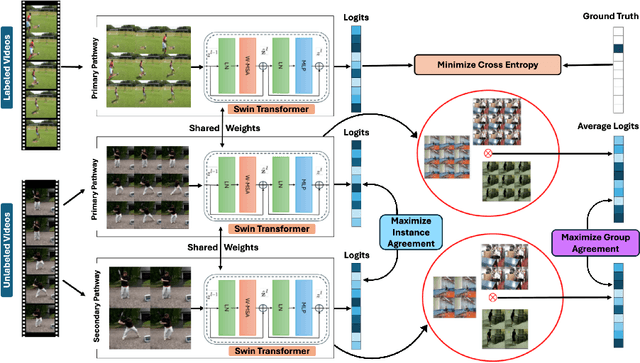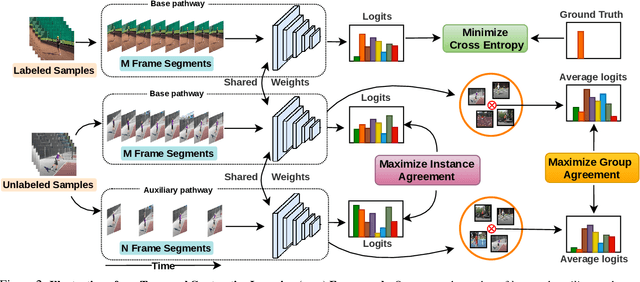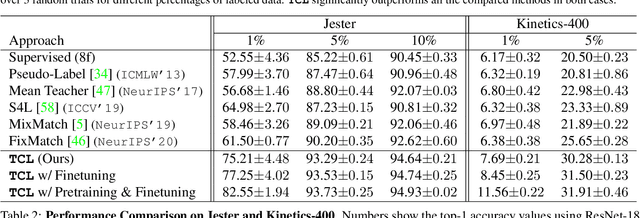Omprakash Chakraborty
SITAR: Semi-supervised Image Transformer for Action Recognition
Sep 04, 2024



Abstract:Recognizing actions from a limited set of labeled videos remains a challenge as annotating visual data is not only tedious but also can be expensive due to classified nature. Moreover, handling spatio-temporal data using deep $3$D transformers for this can introduce significant computational complexity. In this paper, our objective is to address video action recognition in a semi-supervised setting by leveraging only a handful of labeled videos along with a collection of unlabeled videos in a compute efficient manner. Specifically, we rearrange multiple frames from the input videos in row-column form to construct super images. Subsequently, we capitalize on the vast pool of unlabeled samples and employ contrastive learning on the encoded super images. Our proposed approach employs two pathways to generate representations for temporally augmented super images originating from the same video. Specifically, we utilize a 2D image-transformer to generate representations and apply a contrastive loss function to minimize the similarity between representations from different videos while maximizing the representations of identical videos. Our method demonstrates superior performance compared to existing state-of-the-art approaches for semi-supervised action recognition across various benchmark datasets, all while significantly reducing computational costs.
Semi-Supervised Action Recognition with Temporal Contrastive Learning
Feb 04, 2021



Abstract:Learning to recognize actions from only a handful of labeled videos is a challenging problem due to the scarcity of tediously collected activity labels. We approach this problem by learning a two-pathway temporal contrastive model using unlabeled videos at two different speeds leveraging the fact that changing video speed does not change an action. Specifically, we propose to maximize the similarity between encoded representations of the same video at two different speeds as well as minimize the similarity between different videos played at different speeds. This way we use the rich supervisory information in terms of 'time' that is present in otherwise unsupervised pool of videos. With this simple yet effective strategy of manipulating video playback rates, we considerably outperform video extensions of sophisticated state-of-the-art semi-supervised image recognition methods across multiple diverse benchmark datasets and network architectures. Interestingly, our proposed approach benefits from out-of-domain unlabeled videos showing generalization and robustness. We also perform rigorous ablations and analysis to validate our approach.
 Add to Chrome
Add to Chrome Add to Firefox
Add to Firefox Add to Edge
Add to Edge